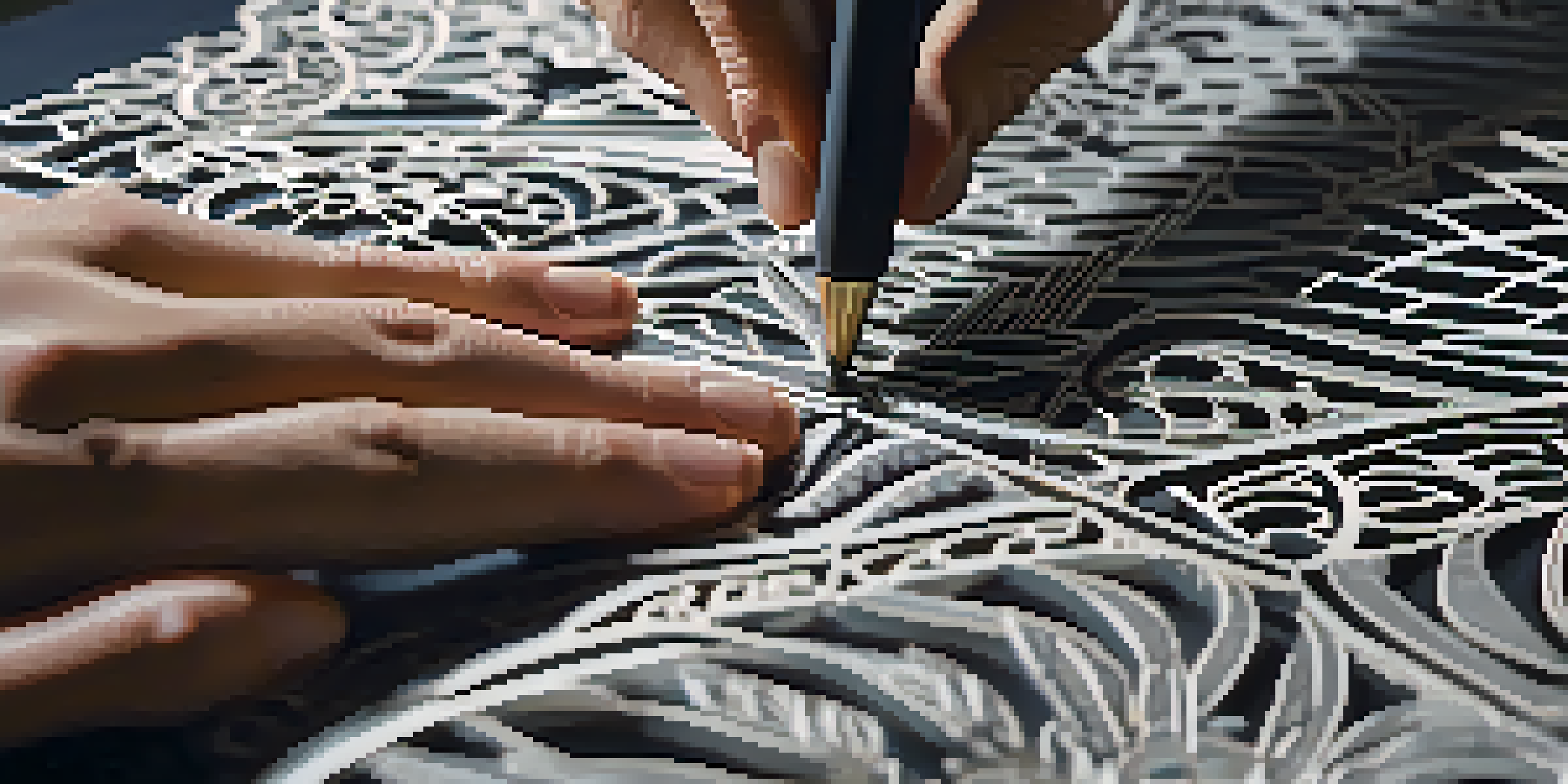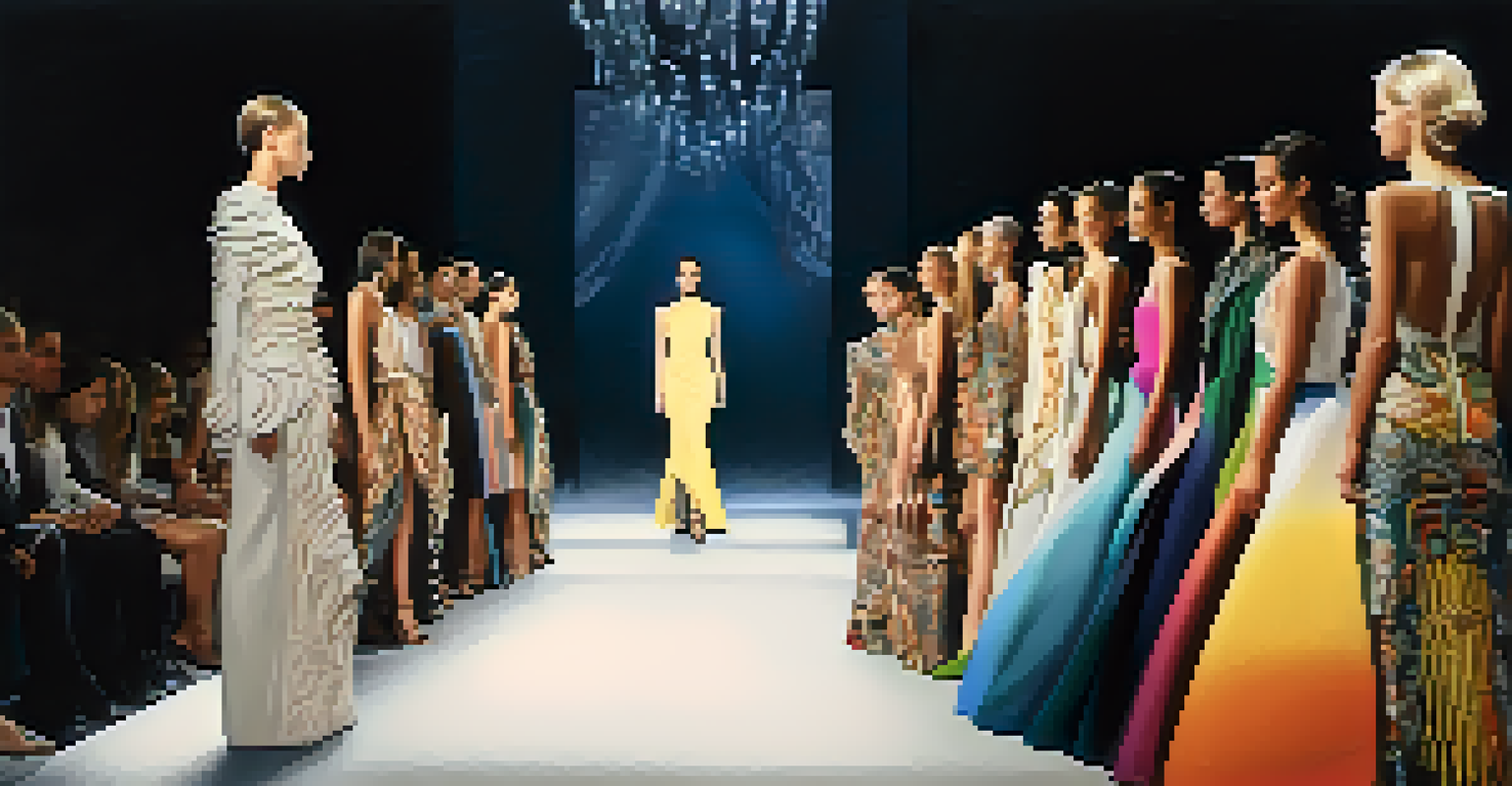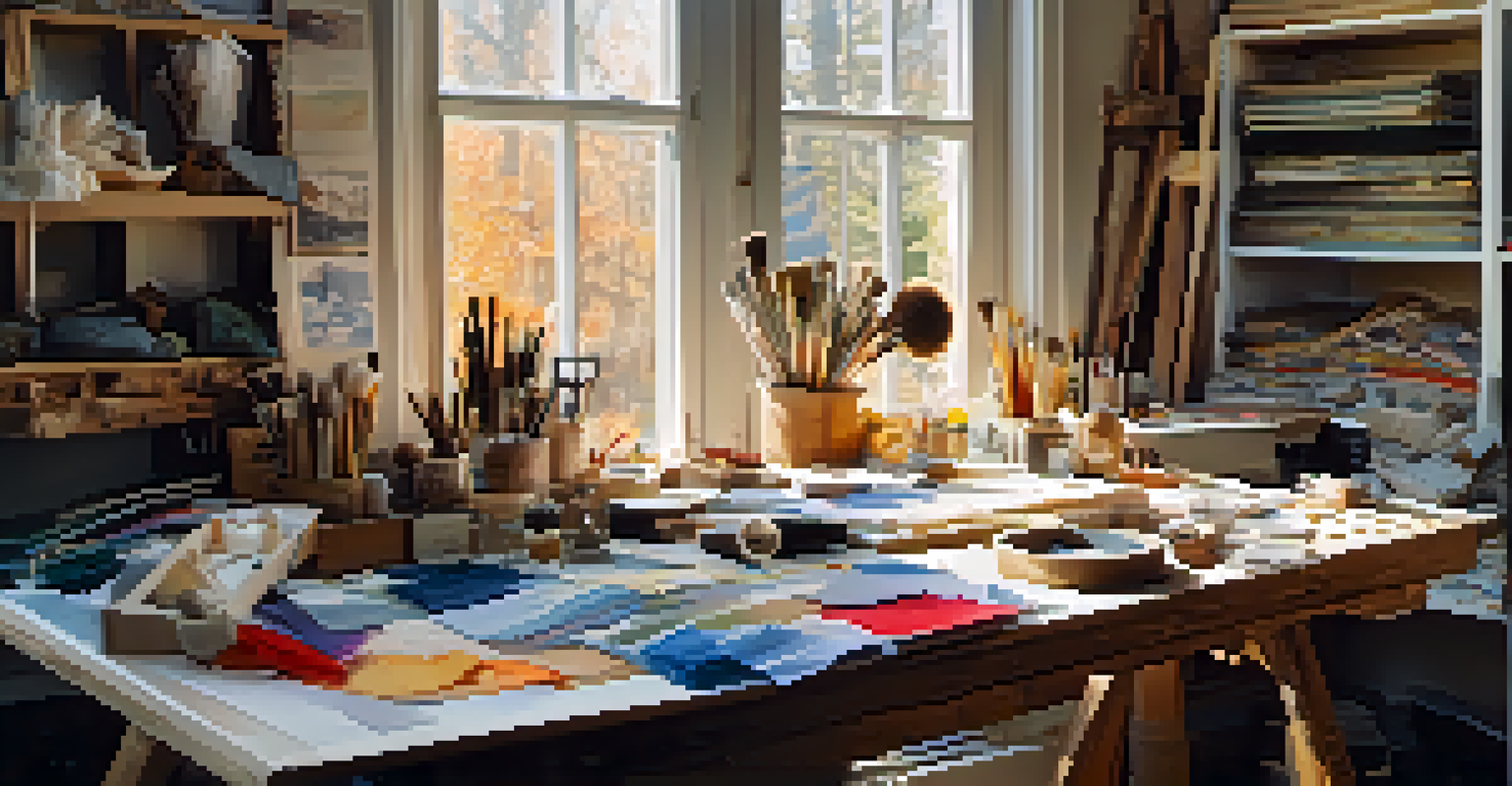From Sculpture to Fabric: Carving Techniques in Fashion

Understanding Carving Techniques in Fashion Design
Carving techniques in fashion may sound like a unique blend of art and textile design, but they are crucial in sculpting garments. Just like a sculptor chisels away at stone to create a masterpiece, fashion designers use similar methods to shape fabric into stunning silhouettes. These techniques allow designers to manipulate materials, creating texture and form that enhance the overall aesthetic of a piece.
Fashion is the armor to survive the reality of everyday life.
In essence, carving techniques involve removing or altering layers of fabric to achieve a desired look. For instance, a designer might use laser-cutting technology to create intricate patterns that mimic the details found in traditional sculpture. This fusion of sculpture and fabric not only elevates the design but also adds depth and dimension, making garments visually captivating.
As we explore these techniques further, it’s essential to recognize the craftsmanship and creativity that go into each piece. Designers are not just creating clothing; they are sculpting wearable art that tells a story and evokes emotion through their innovative methods.
The Evolution of Carving Techniques in Fashion
Carving techniques have evolved significantly over the years, adapting to advances in technology and changes in fashion trends. Early methods often relied on manual cutting and stitching, with designers using scissors and knives to shape fabric. However, the introduction of computer-aided design (CAD) and laser technology has transformed the way designers approach carving, enabling precise cuts and intricate designs that were once unimaginable.

This evolution has not only expanded the possibilities for creativity but also increased efficiency in the production process. For example, designers can now create complex patterns that can be replicated effortlessly across different garments, ensuring consistency and quality. This shift has allowed fashion houses to experiment more boldly, pushing the boundaries of traditional design.
Carving Techniques Enhance Fashion Art
Fashion designers use carving techniques to transform fabric into sculptural pieces, blending artistry and functionality.
Additionally, the integration of sustainable practices into carving techniques has become a focal point in modern fashion. As designers strive to minimize waste, they are exploring ways to repurpose fabric scraps and utilize eco-friendly materials, demonstrating that innovation can go hand-in-hand with environmental responsibility.
Notable Designers Who Use Carving Techniques
Several renowned designers have made a name for themselves by incorporating carving techniques into their collections. One such designer is Issey Miyake, known for his innovative use of pleating and cutting, which creates sculptural garments that are both functional and artistic. His signature designs often resemble three-dimensional sculptures, showcasing the seamless blend of fashion and art.
The details are not the details. They make the design.
Another influential figure is Alexander McQueen, whose dramatic designs frequently featured carved elements that told a story. McQueen’s work often explored themes of nature and the human form, and his use of carving techniques allowed him to bring his artistic vision to life in striking ways. Each piece was a testament to the power of fashion as a medium for self-expression.
These designers not only highlight the versatility of carving techniques but also inspire emerging talents in the fashion industry. By pushing the boundaries of what is possible, they encourage a new generation of designers to explore the sculptural potential of fabric, leading to exciting innovations in the world of fashion.
The Role of Technology in Carving Techniques
Technology has played a pivotal role in revolutionizing carving techniques in fashion design. Tools such as 3D printing, laser cutting, and CNC machines have enabled designers to achieve levels of precision that were previously unattainable. This technological advancement allows for intricate patterns and textures to be crafted with ease, transforming the creative process.
For instance, laser cutting has become a popular method for creating detailed designs on various fabrics. This technique not only enhances the visual appeal of garments but also minimizes waste by allowing designers to cut multiple pieces in one go. As a result, technology is not just a tool; it is an integral part of the design process that shapes the future of fashion.
Technology Drives Carving Innovation
Advancements like laser cutting and 3D printing have revolutionized carving techniques, allowing for precise and intricate designs.
Moreover, the integration of augmented reality (AR) and virtual reality (VR) in fashion design is beginning to change the way designers approach carving techniques. These technologies allow for virtual prototyping, enabling designers to visualize and test their creations before physically producing them, thereby streamlining the design process and reducing material waste.
Sustainability and Carving Techniques in Fashion
Sustainability is a growing concern in the fashion industry, and carving techniques are evolving to address this issue. Designers are increasingly focused on minimizing waste and utilizing eco-friendly materials in their creations. By adopting sustainable practices, they can create beautiful designs without compromising the health of our planet.
One way this is achieved is through the innovative use of leftover fabric. Designers are finding creative ways to incorporate remnants into their pieces, often using carving techniques to transform these scraps into intricate designs. This not only reduces waste but also adds uniqueness to each garment, as no two pieces are exactly alike.
Additionally, many designers are exploring biodegradable fabrics and natural dyes, ensuring that their work aligns with environmentally responsible practices. This shift towards sustainable carving techniques reflects a broader trend in the fashion industry, where designers are not just creators but also stewards of the environment.
Challenges in Using Carving Techniques
While carving techniques offer many benefits, they also present challenges that designers must navigate. One significant hurdle is the need for specialized equipment and skills. Not every designer has access to the latest technology, such as laser cutters or 3D printers, which can limit the creative possibilities for some.
Moreover, the meticulous nature of carving techniques requires a high level of precision and attention to detail. Designers must invest time and effort into mastering these techniques, which can be daunting for those who are just starting out in the industry. This learning curve can deter some from exploring the full potential of carving in their work.
Sustainability Shapes Future Techniques
The shift towards eco-friendly practices in carving techniques reflects a commitment to reducing waste while creating unique fashion designs.
Lastly, there is the challenge of consumer perception. While innovative designs can attract attention, some consumers may still favor traditional methods. Designers must balance creativity with market demand, ensuring that their carved creations resonate with their audience while staying true to their artistic vision.
The Future of Carving Techniques in Fashion
As fashion continues to evolve, the future of carving techniques looks promising. With ongoing advancements in technology and a growing emphasis on sustainability, designers are poised to explore new horizons. The integration of digital tools will likely lead to even more innovative designs that challenge conventional notions of fashion.
Additionally, as consumers become more environmentally conscious, they will likely seek out brands that prioritize sustainable practices. This shift in consumer preferences will encourage designers to further develop carving techniques that not only showcase creativity but also align with eco-friendly values.

Ultimately, the future of carving techniques in fashion is bright, with endless possibilities for exploration and expression. As designers continue to push boundaries and redefine what is possible, we can expect to see a rich tapestry of sculptural fashion that captivates and inspires.